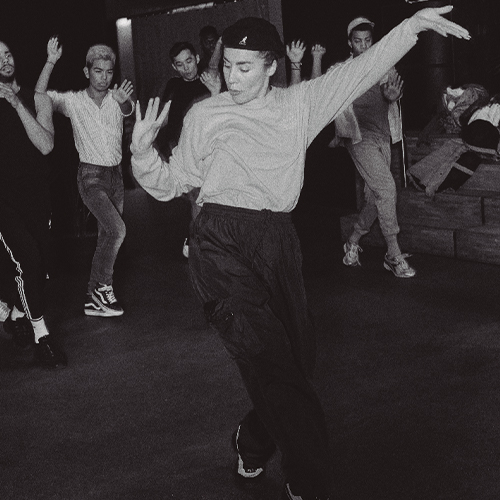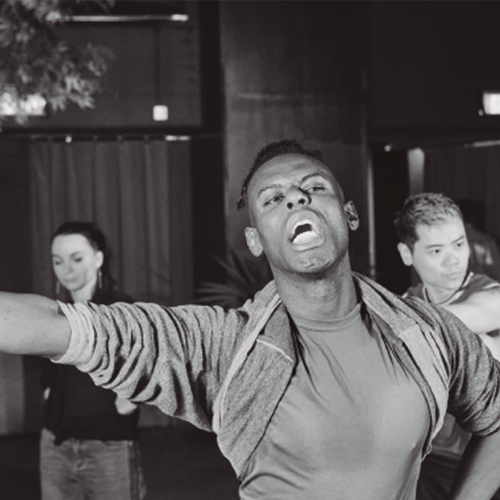
Amber Vineyard: we create our own legacy
Ballroom is a subculture that originates from the Latinx- and Afro-American LGBTQ+ in New York as an underground outlet and training method. Within the ballroom culture the emphasis lies on taking up space and the celebration of its participants; a subversion of a society in which the bodies of trans and queer Black/Indigenous people of colour are marginalised.
The ‘80s are seen as the heydays of modern ballroom culture, although its original conception dates back a century. Voguing, a form of expression from the ballroom culture, is becoming more and more popular amongst young people in Europe, also outside of the LGBTQ+ community.
The popular Netflix series ‘Pose’ might seem to have spurred the growing interest in balls in the Netherlands, but it actually has been on the rise for years.
Amber Vineyard is famed as the driving force behind this. In 2013, she organised her first ball in Rotterdam and two years later she established ‘House of Vineyard’. According to her passionate choreographer, teacher and manager, organising balls has the same importance function in 2020 as it did when it started.
Text: Meike van der Lippe, Photography: Jasmine de Vries
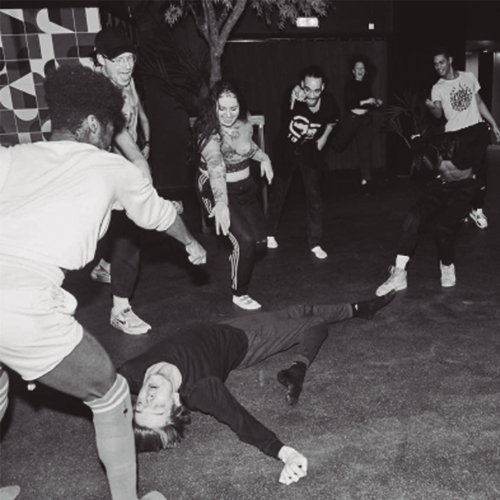
As mother of House of Vineyard, Amber currently has twenty-one kids under her wing. ‘I have a personal bond with each child. Taking in a new member of the family is driven by emotion. You can compare it to adopting a child. When I started ‘House of Vineyard’, I was the one making these decisions. I really was a single mother. Now I discuss it regularly with the kids and father Ellie. I ask if they have someone in mind. Because the family keeps getting bigger, the energy changes. I see it as my responsibility to keep that balanced.
What are balls? Parties during which the participants compete with each other in different performance categories in the name of their house. A jury assesses the presentation of a participant within a certain category. The categories are about sexuality and gender; the masculine and feminine expressions within those. For example, the category Butch Queen Vogue Femme is meant for gay men who ‘walk’ feminine expression. Drag is about parodying traditional gender roles, while Realness is all about adapting as realistically as possible to the predominating cisgender heteronorm. The ballroom culture goes beyond these competitions. The LGBTQ+ participants join a mentor who is in charge of a collective, or ‘house’. The houses arose from a need for safe housing and as a replacement of the contact with the original family. This chosen family knows a longstanding tradition within the LGBTQ+ community and among racial minorities in America. The battles during balls are between individuals and their houses.
When I founded House of Vineyard, I got a lot of backlash from the American scene. ‘European houses don’t count’ is often the idea that they have. There are big American houses that have chapters in Europe, with local mothers and fathers who recruit kids here. The difference: they have established a legacy in the past thirty years, whilst we are still at the beginning. We reflect the society in this country differently.
There are only a few real European houses: House of Vineyard, House of LaDurée in Paris and one that’s currently being established in Spain. This is good, we’re making a statement: every country has its own struggles, its own stories. We’re not all the same as New York.
What’s it mean that ballroom is gaining more popularity?
Amber: ‘There is much going on within which I have to figure out how to find my way. Many people who come into ballroom for the first time are shocked: “Oh my god, there are so many rules and it’s so binary?! And why aren’t the trans women walking the Women’s category?”

You have to understand: Ballroom is a different world. We’re mocking society. In reality, black trans women are at the bottom of the social ladder. But in ballroom you’re at the top as a woman of colour with trans experience, you are a celebrity! We don’t say ‘trans woman’, but ‘femme queen’. So if you walk a Femme Queen category, like Femme Queen Realness, the whole room will stand up.
If you don’t know this, it may appear problematic. Because ballroom is a mirror of society, it’s extremely binary. In the ‘80s, you had to fit in. Being invisible to survive. The category Realness was about survival. The jury was actually society. You were judged on if you looked ‘real’ enough, in other words whether you were playing your role as cishetero well enough. A lot of femme queens walked Realness because they wanted to apply for a job. That’s hard! It creates a thick skin. If you got tens from the jury members, it meant that you could come home safe after a ball.
There’s a lot of debate about Realness at the moment. People are saying: “We don’t need Realness, it’s about performing femininity, we’re all fluid”. That’s true of course, but as far as I’m concerned Realness is very important as commentary, and it’s still about safety, especially that of trans women. There are still many countries in which your throat will be cut if you don’t look real. So what I’m trying to say is that the category Realness has the function of expressing critique and not that you are only valid in our community as a trans woman if you are real.
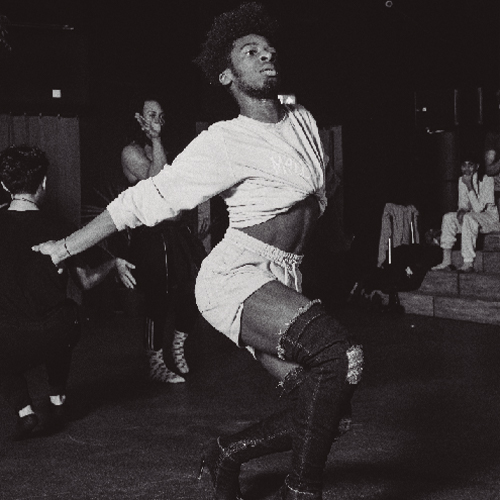
How does it work, walking Realness?
Amber: ‘Take the subcategory Schoolgirl Realness. Then you look like a young girl going to school. What kind of school are you going to? What kind of girl are you? The jury will ask for example: “what’s in your bag?” They’ll want to see you nails, check if your skin is soft. So then the girls will be like (gestures elegantly with the hand along the face) ‘I’m flawless’. So those moves (she makes voguing hand gestures) mean ‘My Adam’s apple is gone’, ‘Look at this profile’, ‘My jawline is eccentric’, ‘Cheekbones hunny!’, ‘See my face’. They demonstrate themselves to the jury. It’s all language.
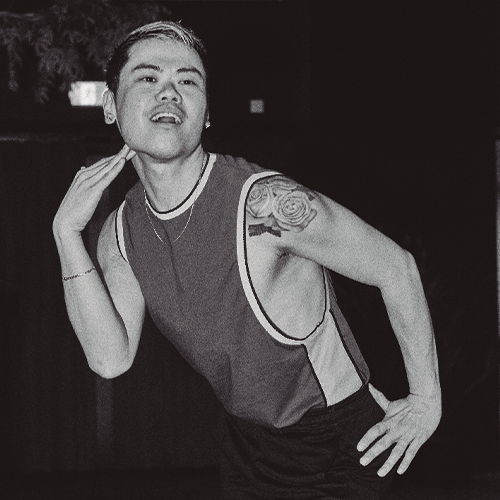
Is your course as mother of the House of Vineyard conservative or pioneering/groundbreaking?
Amber: ‘I think that there is too little attention in the ball scene for the purpose of it, in that sense I’m conservative: ballroom isn’t equal to entertainment. We’re not there yet, globally, that everyone’s existence is accepted.
It’s equally important to me to reflect and react to what’s happening in society. That means that sometimes new rules need to be created. An example of that is the arrival of Thorn. When I met them, they were still discovering themselves. I saw a truly beautiful spirit and I felt chemistry, so I decided to work with them. At that moment I was missing a category for butch lesbians and non-binary people. I felt that if a Butch Queen (gay man) gets different categories to show his feminine qualities, why can’t there be a category for the other way around?
I proposed to Thorn to erect a new category together. And now Thorn is the face of Lion Babe: the first non-binary category for masculine expression in the worldwide ballroom scene. Every country’s incorporating it.
My strong feeling is that we’ll be able to create our own legacy. I’m working hard on it. One of my goals was to represent the House of Vineyard at a ball in New York before 2020. That’s what we did and we were, against my expectation, immediately widely announced and thus acknowledged.
And last year, at the yearly ‘True Colors’ New Years festival at a sold-out Paradiso: The crowd went wild the moment that ‘House of Vineyard’ was announced. We took the stage, not only with the House but also with our young students. They were half in tears, they could have never imagined performing there … That was very special. Honestly really beautiful to see.’
